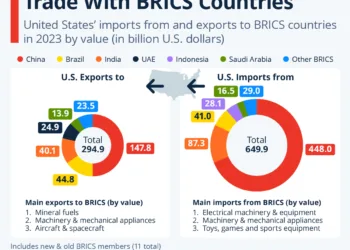As the general election approaches, it’s crucial to understand your rights in the event that your vote is questioned.
The best way to guarantee that your vote counts is to be your own advocate. I am a civil rights attorney and also a lecturer at the University of Southern California’s undergraduate civil rights advocacy program, Agents of Change. Below are some simple steps to ensure your vote is counted, along with two practical solutions if you encounter issues.
One of the key components of ensuring your voting rights is to prepare before you arrive at the polls. Continue reading to discover how and where to register, when and where to cast your vote, and the contact numbers for assistance if you can’t find the information you need online.
Check Your Voter Registration Status
Before you vote, confirm that you are registered. You can check your registration status with this tool. If online verification isn’t an option, contact your local election office or call a voter assistance hotline, which you can find in the hotline section below.
If you discover that you are not registered, you can use this resource from the National Conference of State Legislatures to locate your state’s online registration application. If you need to register in person, contact your local election office for guidance.
If you have missed your state’s registration deadline, you may still have options.
Several states allow same-day registration at polling locations. Check your state’s same-day voter registration laws here. When you arrive at the polling site, ask a poll worker for a same-day registration form, fill it out, and request a “conditional ballot.” This type of ballot means your vote will be counted after your eligibility is confirmed. If you can’t find this information online, call your local election office to ask about same-day registration on Election Day.

Elijah Nouvelage / AFP via Getty Images
Prepare Your Identification Documents
If you reside in a state that requires identification to vote in person, be sure to gather the necessary documents, which may include a driver’s license or bank statements with your name and address, before heading to the polling place. You can locate your county election office’s contact information here. For a detailed list of acceptable ID documents and any exceptions, visit this webpage. Alternatively, call your local election office for specific requirements.
If you’re voting absentee, you can check the identification verification rules for your state here.
Locate Your Polling Place
Make sure you’re heading to the right polling location by using this tool. You can also reach out to your county election office to confirm your polling place and its hours. Find your county’s election office contact information here.
Once you know where and when to vote, you can check in at your polling place. Typically, you should receive a ballot, be directed to a voting booth, and cast your vote by placing your ballot into a machine or a box before heading out happily.
However, there can be issues at the check-in stage.
Potential Issues at the Polls
Here are some challenges you might face when voting, along with ways to address them:
Issue No. 1: Polling Machines Malfunction.
If you’re asked to leave due to broken machines, don’t leave. Instead, request a paper ballot.
Issue No. 2: Polls Close While You’re in Line.
If you’re still in line when the polls officially close, maintain your position and wait to vote. You have every right to cast your ballot even if you are still waiting. Stay in line and wait your turn to vote.
Issue No. 3: Not Listed as a Registered Voter.
If told you can’t vote because your name isn’t on the registry, request that the poll worker check again against the list of supplemental voters. If they still can’t find your name, confirm with the worker that you are at the correct polling location.

Brendan Smialowski/AFP via Getty Images
Issue No. 4: Your Voting Eligibility is Challenged.
If your ability to vote is still being contested even after confirming your polling location, request a provisional ballot. This option is available in every state except for Idaho and Minnesota. For your state’s specific rules regarding provisional ballots, check here.
You can track your provisional ballot here.
Contact a Voter Assistance Hotline
If you’re not offered a provisional ballot, don’t hesitate to call an election hotline for assistance. Below are four hotlines operated by members of the nonpartisan Election Protection coalition:
English: 866-OUR-VOTE / 866-687-8683, from the Lawyers’ Committee for Civil Rights Under Law
Spanish: 888-VE-Y-VOTA / 888-839-8682, from the National Association of Latino Elected and Appointed Officials Education Fund
Asian Languages: 888-API-VOTE / 888-274-8683, from Asian and Pacific Islander American Vote
Arabic: 844-YALLA-US / 844-925-5287, from the Arab American Institute
Report Voter Intimidation
If someone attempts to intimidate you regarding your voting choices, firmly request a ballot from the polling site. Call one of the hotlines above to report the intimidation and consider filing a complaint with the FBI either by phone at 800-CALL-FBI – 800-225-5324 – or online at tips.fbi.gov.
Consider Legal Action
If you’re still unable to vote, you may want to pursue legal options. However, it’s wise to obtain specific advice regarding your situation from one of the hotlines, which typically have free legal resources available. Make note of the names of individuals who obstructed your voting and gather contact information from witnesses if possible.
Leer en español
This article has been updated from its original publication on November 2, 2022.






